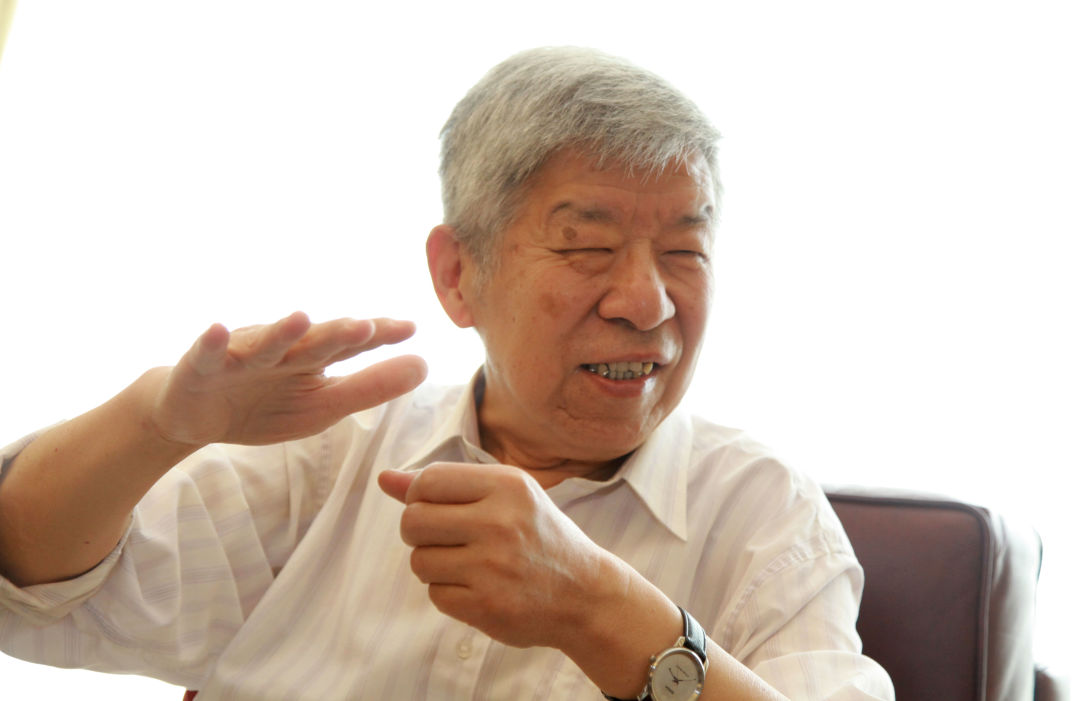
On October 22nd, 2023, Yang Le, an academician of China Academy of Sciences, died in Beijing at the age of 83. People’s vision/photo courtesy
In 1981, the Chinese Academy of Sciences held a general meeting of faculty members, and Hu Keshi, then deputy secretary of the Party Group of the Chinese Academy of Sciences, reported to Deng Xiaoping. Deng Xiaoping specifically asked, "Is there anyone under the age of 50? Is there anyone under 40? " Hu Keshi said that the youngest is Yang Le, 41 years old.
From 1977, when his name appeared on the front page headline of People’s Daily, he became a national idol overnight and became the youngest academician, the curtain of Yang Le’s life really opened. In the next 40 years, Yang Le completed the transformation from a "mathematical star" to a manager, and became one of the masters in China’s mathematical field.
Qiu Chengtong, the first Chinese winner of the Fields Prize, said that if he chose a career, Yang Le would have a good chance. "But he doesn’t seek fame and fortune, and thinks that China’s mathematical future is more important than anything else. His selflessness is admirable, and he has made great contributions to the development of mathematics in China. ". Qiu Chengtong said: "He can afford the word" unparalleled national scholar "!"
On October 22nd, 2023, Yang Le died in Beijing at the age of 83. In the obituary, the Institute of Mathematics and System Science of Chinese Academy of Sciences wrote, "Yang Le is a leader in the field of mathematics in China and a model of an era."
Yang Le has been fond of mathematics since he was in junior high school. When I was in high school, it coincided with the implementation of the national "First Five-Year Plan". In response to the call of "concentrating on industrialization", many young people chose to study engineering. "The Department of Electrical Engineering in Tsinghua University is recognized as the most ideal department and major".
This made Yang Le feel contradictory, but he still felt that he was "more interested in mathematics". In 1956, Yang Le was admitted to the Department of Mathematical Mechanics of Peking University; Six years later, he and his classmate Zhang Guanghou were admitted to the graduate school of Mathematics Institute of Chinese Academy of Sciences in Xiong Qinglai. Xiong Qinglai is a senior figure in China mathematics, and mathematicians Chen Shengshen, Hua Luogeng and physicist Qian Sanqiang are all his students.
When he was in the graduate school of mathematics, Yang Le showed his academic talent. In college, Yang Le’s research direction was that the generalized analytic function was emphasized in function theory; After entering the Institute of Mathematics, Yang Le nominally majored in function theory, and the specific direction was determined as function value distribution theory. According to the training mode of the Institute of Mathematics, graduate students are equivalent to junior researchers, who can study and carry out academic research at the same time. Two years after entering the Institute of Mathematics, Yang Le began to publish articles in 1964.
"At that time, there was almost no communication between domestic academic circles and the international community, and we did not notice the latest international progress." Yang Le said that under the guidance of Xiong Lao, they quickly approached the forefront of research work and reached the international advanced level through in-depth study of French classical theories.
In January, 1965, Yang Le and Zhang Guanghou completed the paper "Research on Normal Rule of Analytic Function Family with Multiple Values I: A New Rule and Its Application" in French. In September of the same year, China Science published the paper.
If we want to trace back to Yang Le’s academic career, this paper co-authored by him and Zhang Guanghou may be a good start: since then, their research results have been recognized internationally.
Yang Le recalled that shortly after the publication of the article, the "Cultural Revolution" broke out and all academic activities stopped. It was not until 1971 that the policy of the Chinese Academy of Sciences was loosened that they had the opportunity to consult the literature.
In the library, Yang Le and Zhang Guanghou found that in 1969, an American scholar quoted an article co-authored by the two men and a paper published by Yang Le in 1964 in his doctoral thesis. The scholar’s paper was published in a very famous international mathematical journal.
The American scholar pointed out in his paper that the research by Yang Le and Zhang Guanghou "solved an unsolved problem raised by the British mathematician Walter Hayman at the International Conference on Function Theory in London in 1964". But because of the lack of academic exchanges, the two didn’t even know what the question raised by Watt Hyman was.
In the summer of 1965, Xiong Qinglai felt that the students had finished their studies and done a good job in research, so they could graduate early. To this end, he wrote a formal to the Institute of Mathematics